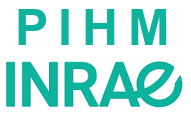Interface Processes and Hygiene of Materials
Ongoing projects
- HORIZON-JU-CBE-2023-IA-05 SurfToGreen
- ECOS SUD ARGENTINE
- ESA OIL FOAM
- ANR PRC COOLISSE
- EXPLOR’AE SENSOFOAM
- ANR JCJC SOGLOSSI
- Chaire industrielle Proteinopeps
- LAI SAMBA
- SENSOFOAM (Appel ECOS SUD)
- H2020 FAIRCHAIN
- LIA FOODPRINT
Research themes

UMET - Interface Processes and Hygiene of Materials
Group leader: Maude JIMENEZMembers
The Process Interfaces and Hygiene of Materials (PIHM) team is interested in understanding the bio-adhesive phenomena occurring in the agri-food sector during the processing of agricultural products. It is therefore a question of mastering the transformations of soft food material (structure-function relationships) but also the hygiene of the processes and in particular the materials constituting the surface of the equipment.
The goals are first of all the implementation of preventive and curative strategies to ensure the sanitary quality of processed products and the hygiene of surfaces used during agrifood processing. These strategies also aim to limit the ecological footprint associated with processing-cleaning cycles. The work on interactions at interfaces carried out in the PIHM team is based on the study of the properties of fouling structures (food and microorganisms - Spores and Biofilms) and the properties of the coatings constituting the surface in order to understand why and under what conditions contaminants will settle in these industrial systems, but also resist the hygiene procedures put in place to eliminate them. Soft food material characterization and modeling work is also taking place to master the obtaining of certain functionalities.
Thus, the PIHM team's research is organized around three axes in order to better understand:
- the properties of fouling structures and environmental conditions that may affect their ability to contaminate surfaces,
- The properties of materials affecting the formation or detachment of deposits,
- Process dynamics at interfaces (adhesion and release kinetics of contaminating species, adhesion / cohesion of deposits during the process, etc.).
The goals are therefore:
- the design of non-stick / antibacterial materials,
- the design of equipment whose geometry limits adhesion and / or promotes the release of soiling,
- the implementation of process management and transformation lines innovative products producing few potentially fouling compounds),
- the implementation of eco-efficient processing-cleaning-disinfection procedures,
- the design of foods with mastered functions.

